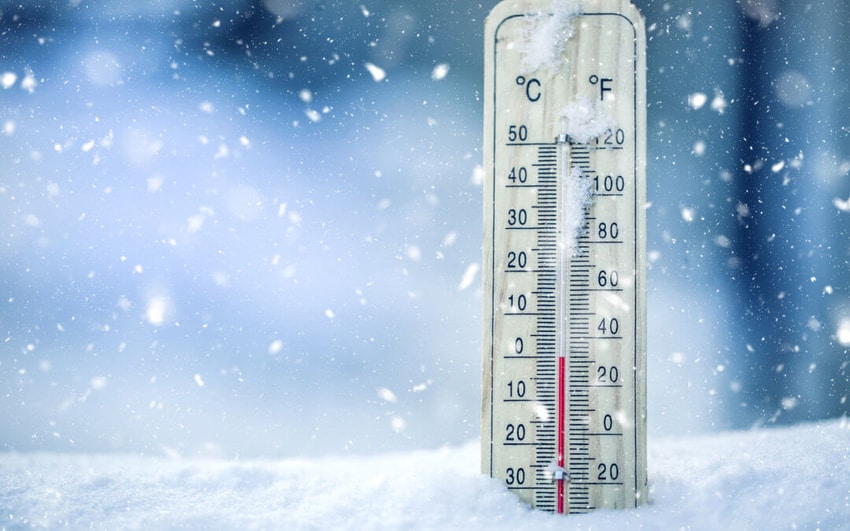How to Prepare Garage Doors for Winter Weather

Your garage door and its mechanical components, like most things in and around the home, experience a lot of usage throughout the year. But come the hard Colorado winter, not only is your garage door still being heavily used, it’s under constant attack from the freezing and damp weather conditions. If you think about it, you wouldn’t leave the rest of your home unprotected from the elements, so why would you leave your garage door and all of its components unprotected at this particularly harsh time of year – after all, it is a part of your property.
And something else that you may be unaware of is that your garage is almost certainly the least energy-efficient space in your home. This means higher energy bills if you need to heat it over the winter months, which in turn leads to your home having an annual higher carbon footprint. Yes, something that these days, we all try to avoid.
So, how do you go about protecting and insulating your garage and its door from the harsh elements of a cold Colorado winter? Well, there are a number of things that you do.
Invest in Insulation and Make Regular Garage Door Inspections
As you may guess, your garage door takes most of the punishment from the winter elements. This means you need to make regularly inspect your garage door's paint and bodywork to check for signs of erosion damage. If you are not exactly sure what to look for, you could arrange for a reputable company to come out and carry out an inspection. They will be able to professionally check your door and its internal mechanisms for any signs of weather-related damage and make repairs whenever necessary.
And to keep the cold at bay and help reduce your carbon footprint, you could invest in a dedicated garage door insulation kit, some insulation board or bubble foil roll. All of these materials can be easily attached to the inside of the garage door, greatly reducing heat loss. Again, if you don’t feel confident about carrying out the work, a reputable local garage door service provider will definitely be able to help. Remember, your door is where most of the heat escapes from your garage and is also where most of the cold air transfers in from the outside.
Check the Seals on Your Garage Door
As well as checking your garage door for signs of damage and wear, it’s also a good idea to pay some attention to the condition of your garage door seals. The seals are located on the bottom of your garage door, where they have the job of stopping water and other types of debris finding its way into your garage. To check these seals, all you need to do is pull up your garage door halfway and just give it a close visual inspection. Again, if you are not quite sure what you are looking for, you could just call a local specialist, and they will be able to very quickly give your seals a professional inspection. As you can imagine, damaged seals will let in water, debris and cold air, so it’s well worth the investment to keep them in perfect working condition.
Weather Strips for Older Garage Doors
Most modern garage doors will be pre-fitted with weather strips when they are installed. However, if you have older garage doors, you may need to check if they actually have them. Weather strips are located around the edges of the door, and like the lower seals, they are there to keep cold air, water, and debris out. Without weather strips, water can penetrate garage door mechanisms and even damage the rollers and springs. If you think your door’s internal mechanism may have erosion damage, you can easily get replacement garage door springs, which professional technicians can usually install within only a couple of hours.
Check for Gaps Around Your Garage Doorframe
After you have checked the seals and the weather strips on your garage doors, it’s time to inspect the door surround for any gaps. Gaps around the doorframe are actually fairly common on older garage doors and can let water, debris, and cold in at alarming rates. Water transfer can be particularly damaging to your door’s steel springs and roller systems, so if you see any, you need to plug them up with some latex-based builders’ caulk or silicone sealant. If after checking, you find erosion damage to your door’s internal mechanism, you can find new garage door springs in Broomfield and other major towns very easily indeed. A professional garage door repair team can inspect and replace these types of mechanisms in only a matter of hours.
Insulation for the Walls and Ceiling
To make your garage more comfortable and more environmentally friendly, you could insulate the walls and ceiling. This doesn’t actually need to cost a small fortune, as you can simply buy some u-value insulating rolls or sheets and fit them between the rafters and walls. This will make an immediate difference to the insulation value of your garage, and you won’t need to put on your cold-weather clothing every time you enter. If you wanted to really take your insulation to the next level, you could even get insulation foam injected directly into your garage wall cavity.